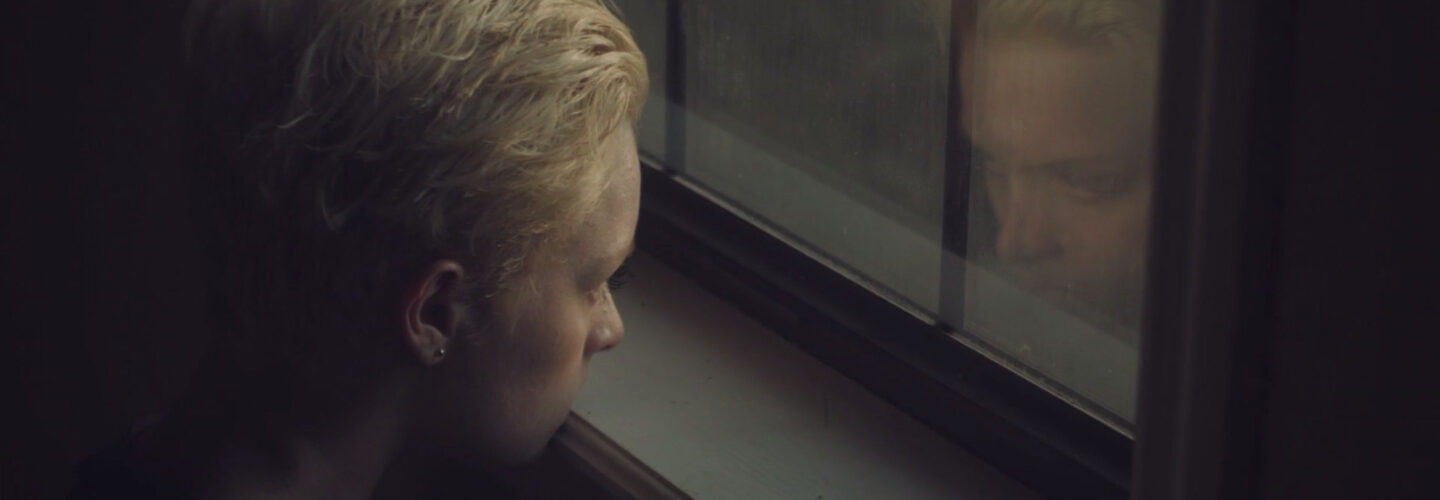
Language is littered with phrases which speak to the importance place has in our lives, and if home truly is where the heart is, what happens to our relationship to the places we hold so dear when we move our heart onto somewhere new? A melding of observational documentary and surreal dance narrative, Spaces Part I: Interior sees director Jake Saner collaborate with dancer and choreographer Ashley Robicheaux to explore both abandoned and childhood spaces, and pose an answer to the question, “How does revisiting the familiar put newness into perspective?” DN asked Saner to tell us more about his journey into the reciprocal relationship between person and space.
Spaces Part I: Interior explores the relationship between us and the physical spaces we occupy. It is a mix of dance film, surreal narrative and cinematic documentary. This was a collaborative project between myself and Ashley Robicheaux (nicknamed Robi, my girlfriend, and currently a dancer at Sleep No More in NYC). It was created over about a week while visiting Robi’s Family in Mississippi. Though the film started out as a clinical exploration of space, it quickly evolved into something much more personally significant. It became a story of an almost accidental homecoming. After seeing some footage we shot in the burned down house (a space we came across by chance while driving) Robi’s mom told us that she still had the keys to their old house. Some years ago she had filed for bankruptcy and the bank seized the house. This was Robi’s childhood home and no one had set foot in it since they moved out. The final scene of this short documents Robi’s journey as she explores a space that was intimately familiar to her for many years.
Familiar childhood objects littered the floor, remnants of a rushed move. The walls were a bit dusty but the space was generally clean. It was inviting. We spent the afternoon exploring the old dining room, kitchen, hallways and at last ended up in Robi’s childhood bedroom. As Robi danced, I could see a sense of relief enveloping her. She was conversing with the child that used to sleep there. A calm innocence with a touch of melancholy and, at last, a simple confidence.
There was no specific destination in mind but we moved forward at a steady pace.
I think one of the most valuable things I learned from this process is about what I’m calling “creative feedback.” I’m referring to the definition of feedback relating to audio, where a sound is created, played back live by a speaker and picked up once again by the microphone that picked up the original sound. This second iteration of the sound is different than the first, it bounces around the space, exploring the odd angles, reflective and dead surfaces before returning to the microphone. This sequence repeats instantly and infinitely, building a unique sound. This is similar to how Robi and I collaborated for this project. There was no specific destination in mind but we moved forward at a steady pace, each playing off of the space, observing how the other used the area and then allowing that to change our perception. Because there was no set goal, this allowed us to truly explore and build ideas in real time. I think this is a truly magnificent experience and an exhilarating approach to filmmaking. The discoveries we made through this process turned out to be so moving. The curtain in a burned out house moving in the wind that crept through a shattered window. The cellophane furniture tarp clinging to Robi’s skin as she explored. These things made us realize that this was a dialogue between her and the spaces she was exploring.

This process was only possible because the stakes were non-existent. Taking artistic risks is much easier when there is no financial risk. We shot this whole film on my Black Magic Pocket Cinema Camera. We used 3 old Arri Schneider Cinegon lenses (10mm, 25mm, 50mm) from the 1940’s and one Cooke Kinetal 17.5mm all of which are Arri Standard Mount. I had a Manfrotto fluid head monopod and a small home made hand held rig created with copper pipe and a leather shoulder pad (it has a bottle filled with pennies as a counterweight). The whole camera set up fit into two small backpacks and could be set up and ready to shoot in about a minute.
This process was only possible because the stakes were non-existent.
The post process was yet another exploration. While in Mississippi, Robi and I shot in many locations that did not make the cut. Quite a few exterior locations were also explored but didn’t seem appropriate for this piece. The biggest struggle for me was finding a balance of ambient stillness and kinetic action. It seemed natural for the film to be slow and contemplative with a lot of room to breathe, but I also knew we were releasing it online and that holding anyone’s attention for 15 minutes is a difficult task. In the end I followed the instinctive flow and resigned myself to the fact that the film might not be for everyone.


